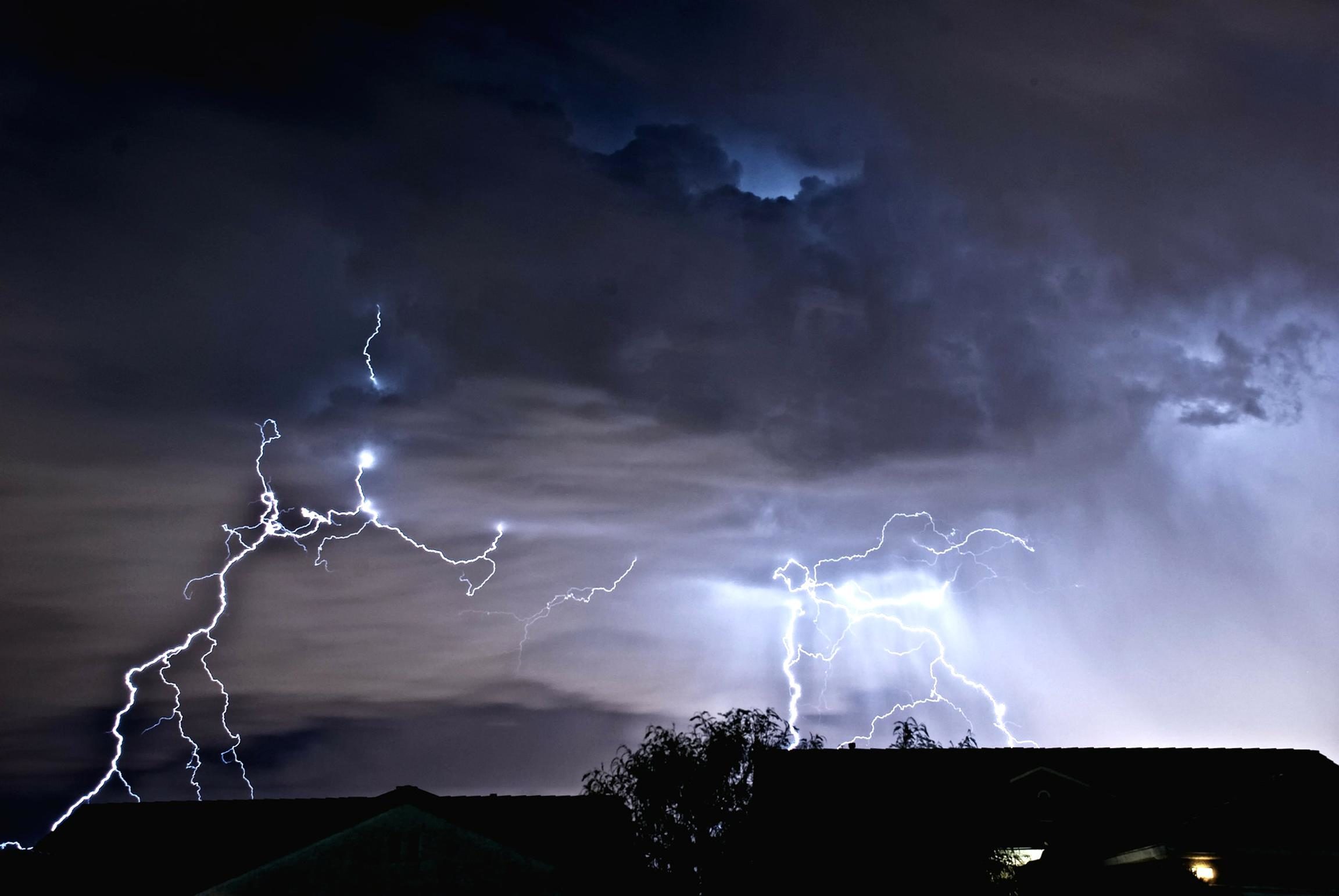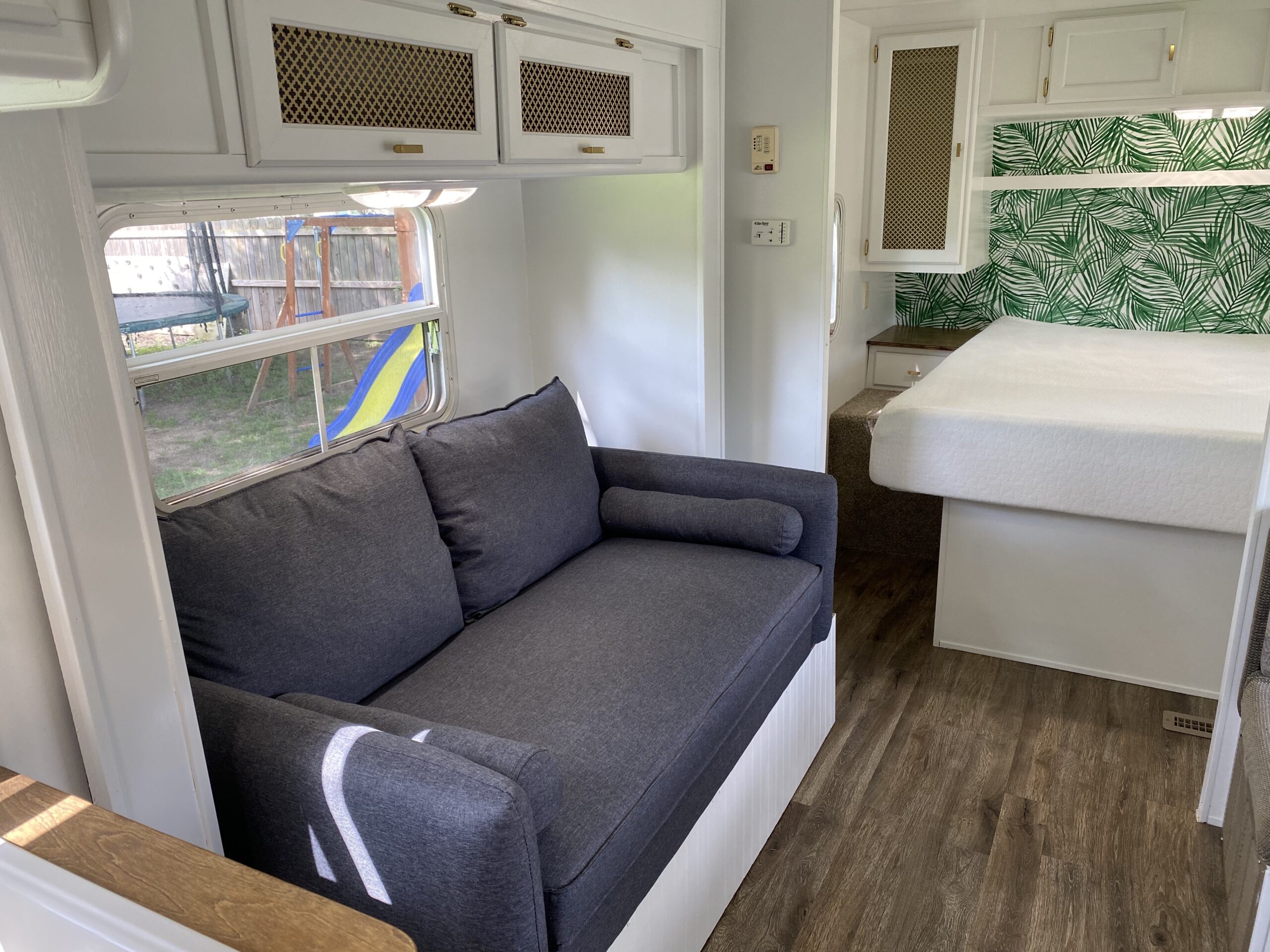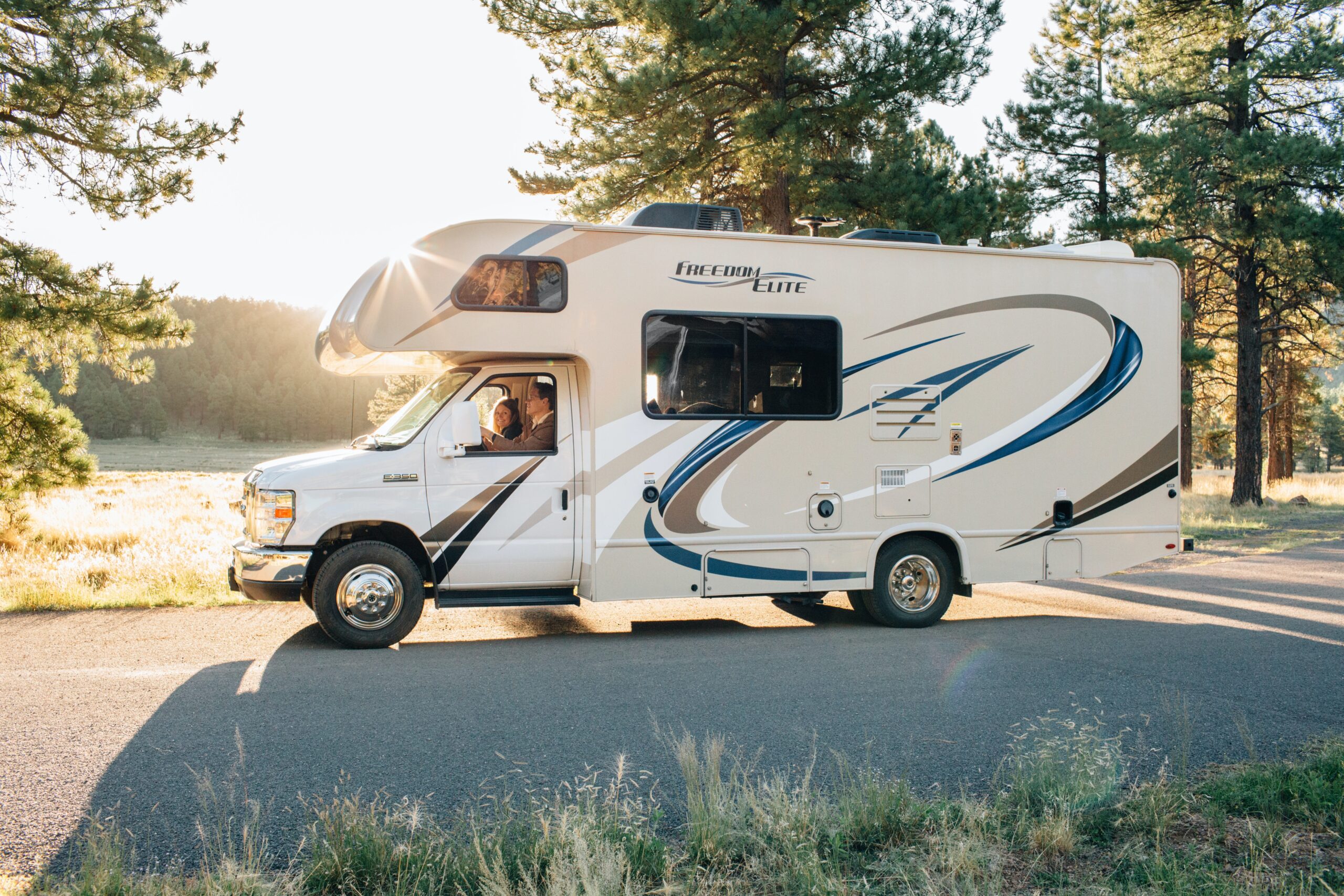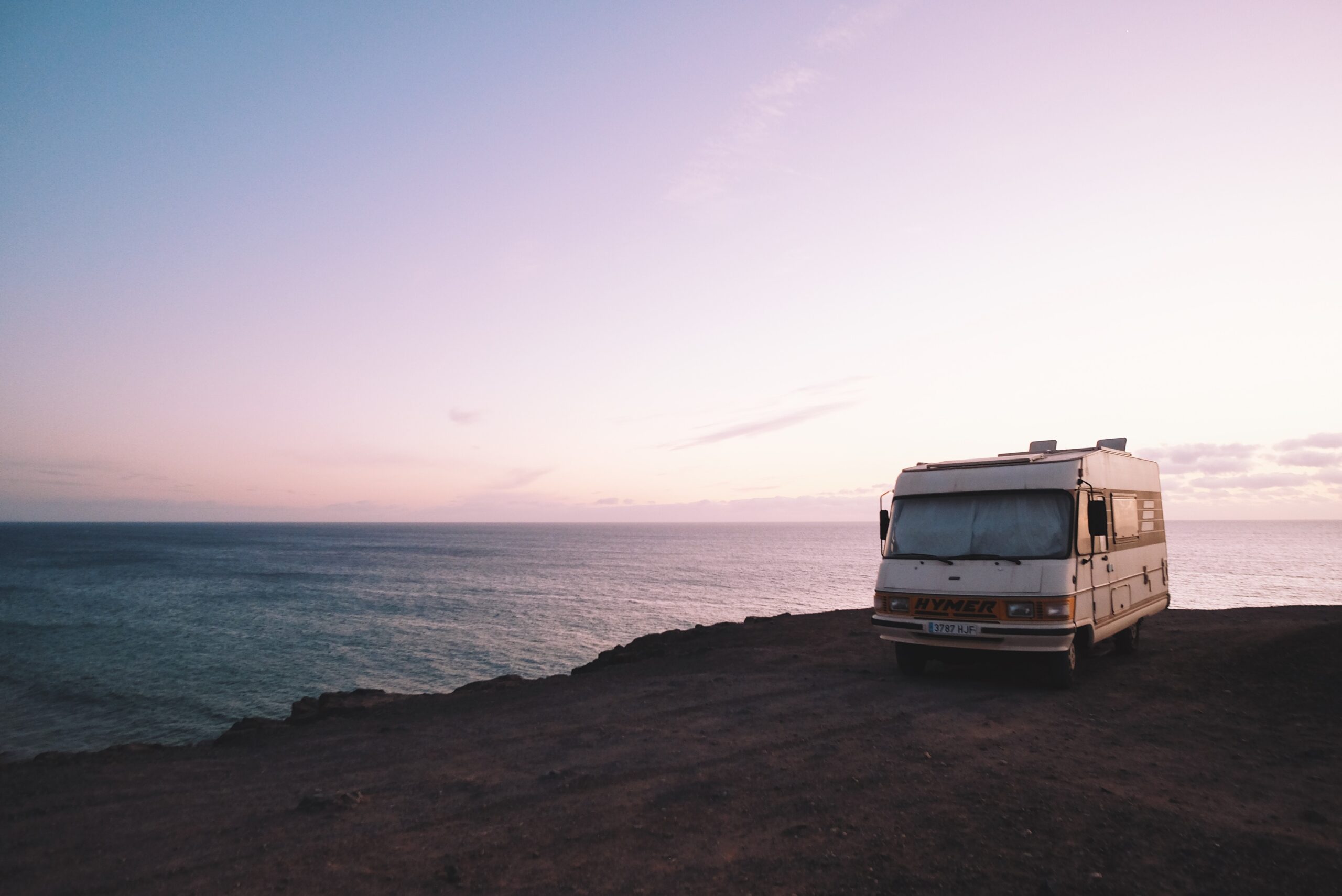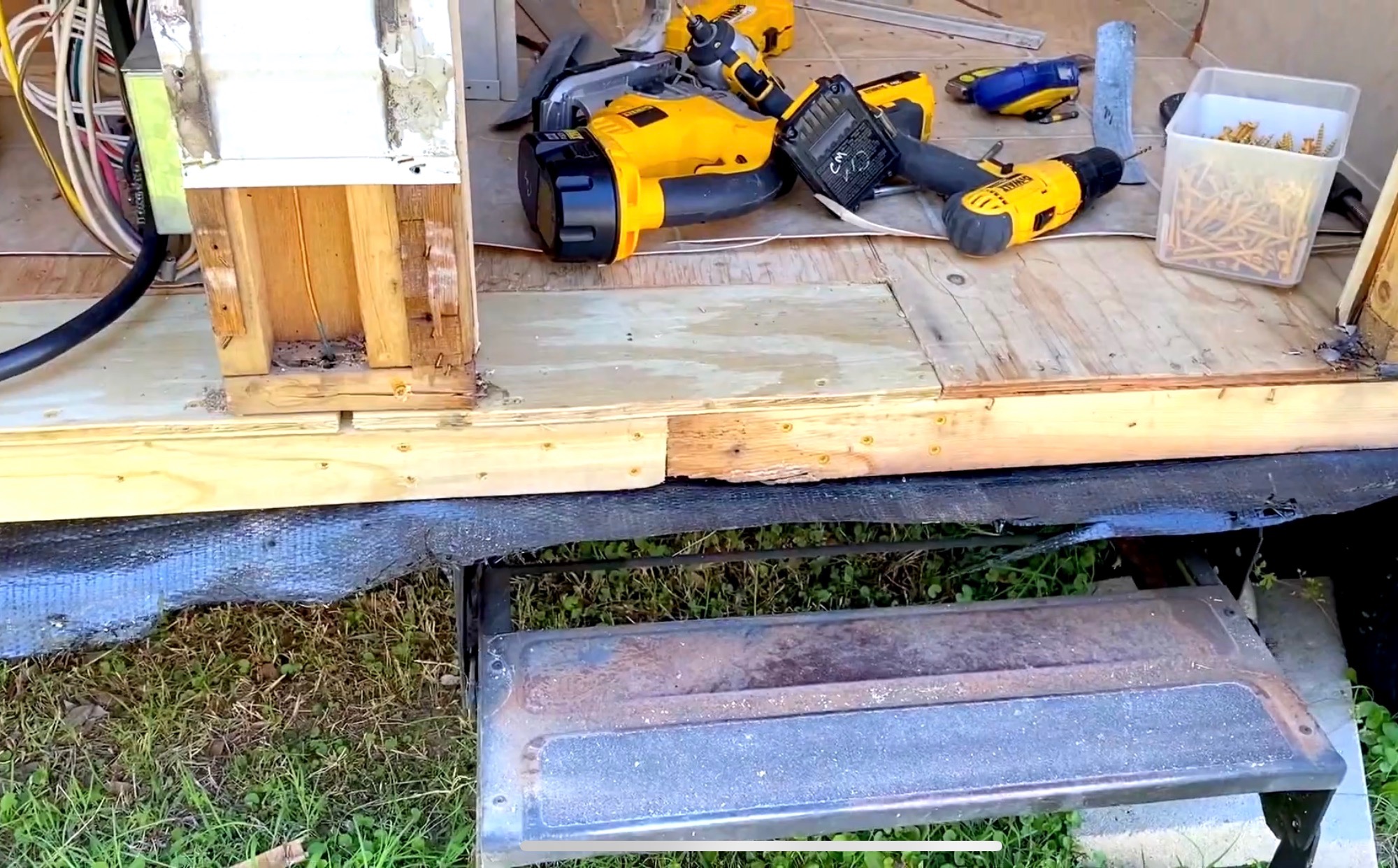Severe weather is something we need to pay attention to regardless of situation. However, when we are in an RV, the situation becomes even more serious.
There are a lot of disadvantages being inside an RV during bad weather. Now, before we get started, I know “bad weather” is a very subjective phrase.
Everyone has a different comfort threshold when it comes to how they feel during storms. What are we going to try to focus on is severe weather capable of doing damage to your RV, thus putting you in danger of being inside.
So, with that being said…
Is it safe to be in an RV during a thunderstorm?
You probably don’t want to hear this, but you are the only one who can answer that question. What I mean by that is, you are going to have to make a determination as to your level of safety.
You will have to look at factors such as the type of rig you are in, the ‘type’ or severity of the storm threatening you (wind, hail, tornado, heavy rain, etc.), the environment around you (tall trees, open terrain, near flood hazards, etc.), and what your shelter options are.
All of these factors, in addition to your comfort level, will help you determine you level of safety in an RV during bad weather.
I will say this, in my opinion, RVs offer very little protection in regards to bad weather. As such, you need to be informed and have a plan to help mitigate these types of situations.
What happens if an RV gets struck by lightening?
As an occupant, if your RV gets struck by lightening you will probably be okay. However, any electronics that are wired or plugged into your electrical system may not fair as well.
Construction type has a lot to do with your protection from a lightning strike while you are in your RV. If you have something a little more unique, like a complete wood design frame, you will have little to no protection. It’s best to seek shelter elsewhere.
However, if you are in more of a standard design consisting of metal/aluminum framing, you will have better protection. A metal roof is even better and offers pretty good protection. If you are in a popup trailer, I wouldn’t even consider staying.
If your rig has none of these features, it’s best to follow your storm shelter plans. Consider using your tow vehicle as a safer alternative to your rig. The Faraday Cage properties of your vehicle should offer ample lightning protection.
How much wind can an RV withstand?
When conducting research on this topic, I came across a study from 1995 by Saiidi and Maragakis, which reports their findings in regards to wind speeds needed to turn over vehicles.
According to this report, perpendicular winds speeds of a minimum 53 mph can overturn an 18-foot travel trailer. They also reported minimum wind speeds (perpendicular) of 65 mph were needed to overturn a 29-foot motor home.
Keep in mind, there are numerous factors that come into play here. Can lower winds be a threat? Yes they can. This doesn’t mean you should chance 50 mph winds in your 18-foot camper trailer.
I can’t stress enough, it’s up to you to make the right decision.

Saiidi, M., and E. Maragakis, 1995: Identification of trigger wind velocities to cause vehicle instability. Final Report to the Nevada Department of Transportation, District II, Agreement No. P206-95-201, Reno, NV.
Where to park an RV during a storm
There is no hard a fast rule here. But, there are some things to consider or at least keep in mind.
Overhead Hazards
Tall trees, overhanging limbs, dead branches, and the like, are are causes for concern during severe weather. When the winds pick up, these things can cause a lot of problems.
Be cautious of parking under or near these when you are expecting weather, especially high winds.
Natural Terrain
The geography of where you are camping may be able to help you as well. If there are natural breaks from the wind and weather, like hills, bluffs, etc., you may consider taking advantage of them.
Wind Direction
Also, be mindful of where the severe weather or winds “typically” come from. This information can be useful when selecting your site. For instance, where we live, our storms usually come from the West/Northwest. As such, we can use this to plan for it.
Orientation
We can orient our rig in a direction where we have a better chance of taking the winds head-on instead of broadside. This helps greatly. Keep in mind, this is not always true and should be treated as such.
Where to seek shelter during a thunderstorm or tornado?
If severe weather is headed your way, it is time to act. This is especially true for high winds, severe thunderstorms, or tornado threats. The last place you want to be is inside your RV.
Designated Storm Shelter
You need to get to shelter as quickly as possible. Some, but not many, campgrounds have storm shelters. A few more have designated areas you can shelter in case of bad weather, like laundry rooms, etc..
If this is a concern, you need to seek this information ahead of time. This gives you the best chance to act in a quick manner if bad weather pops up unexpectedly.
Other Options
If there are not designated areas to shelter, you may also consider the public showers/restrooms. In a lot of locations, these are built out of cinder block, brick, or concrete, and offer a better chance than your RV.
Again, you need to know where to go and how to get there. Parking closer to these structures can help. Remember, you may be doing this in the dark, with driving rain, and high emotion.
Storm Safety Tips
- Monitor weather
- Use stabilizers
- Secure any unsecured items outside
- Unplug from power pedestal
- Unplug electronics inside the rig
- Lower antennas or other accessories
- Avoid wind coming at your broadside
- Bring in your slides
- Hook up to your tow vehicle
- Fill your tanks
- Be aware of overhead hazards
- Leave ahead of bad weather
Conclusion
Severe weather can strike anywhere, anytime and it something that should be taken seriously. Planning ahead of time can make a huge difference when it comes to a favorable outcome.
Knowing the threats associated with lightening, high winds, and tornadoes, and how to deal with each, is invaluable. Know your options ahead of time and plan accordingly.
Be weather aware and monitor your local weather using a NOAA weather radio, mobile devices, etc. Remember, you mobile phone may not always work.
Never feel like you have to shelter in place and wait out a storm. There’s no valor in that. If you have enough advance notice of impending severe weather, there’s no better option than leaving and avoiding it all together.
Live to camp another day!

